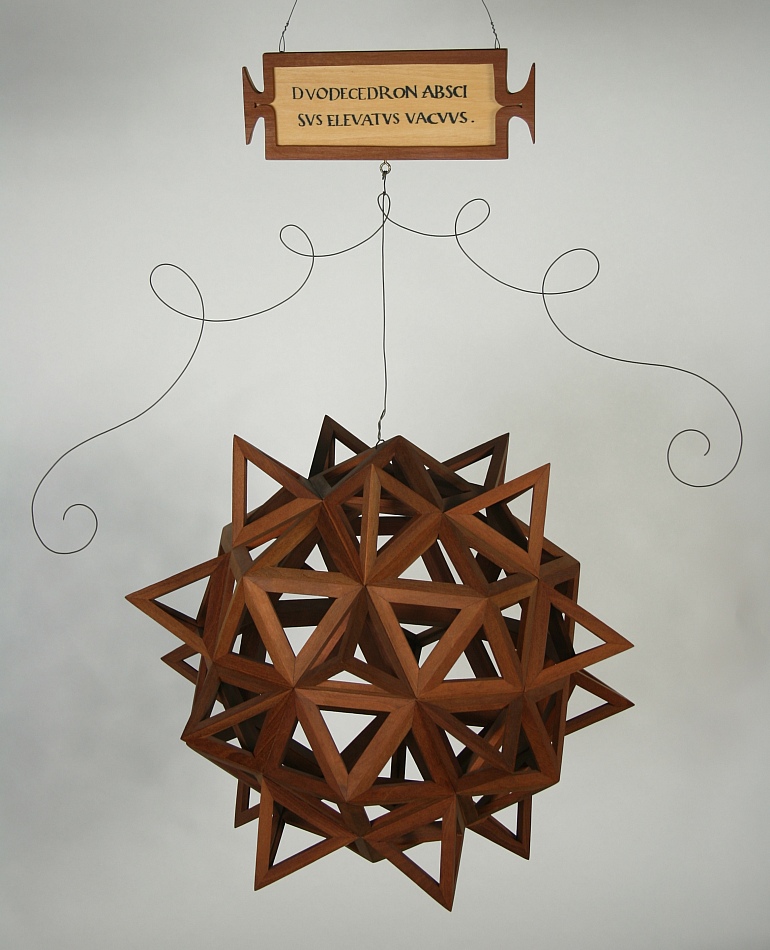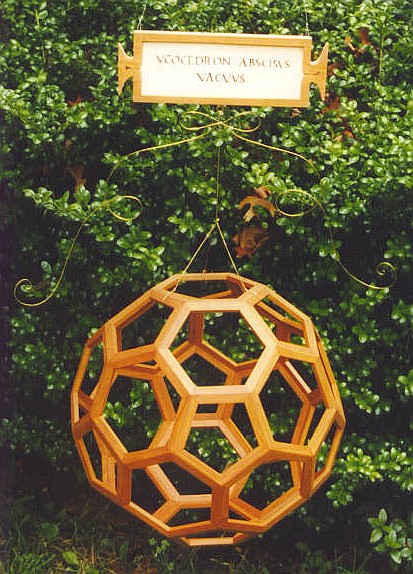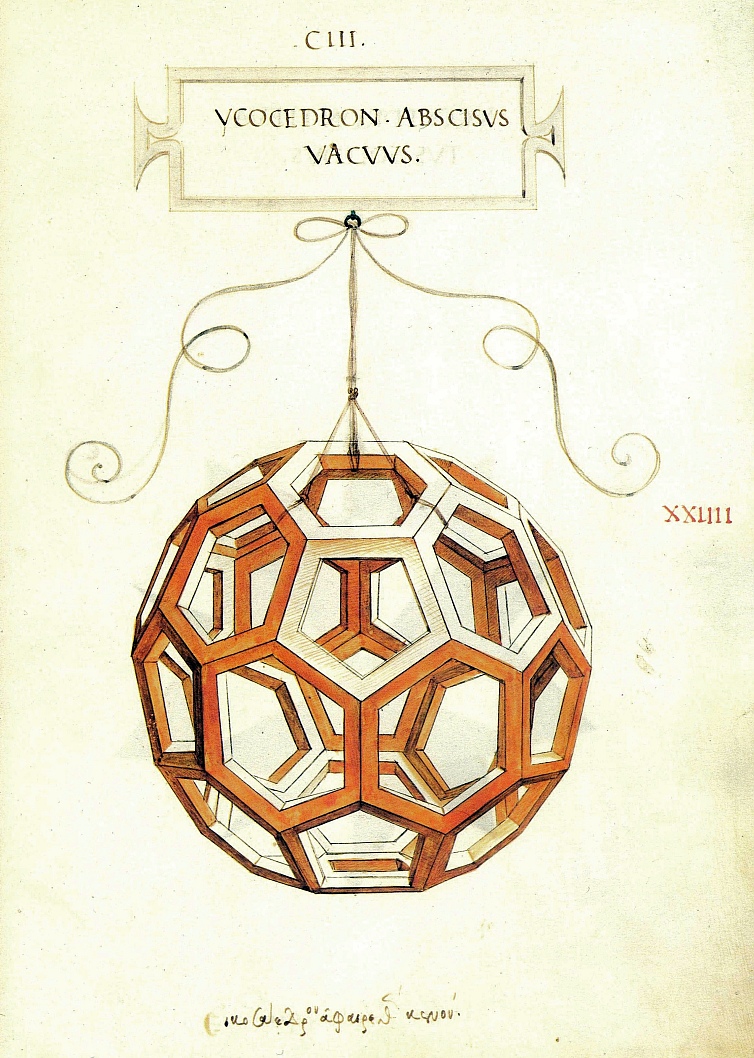Leonardo Project
George W. Hart
Leonardo da Vinci drew the illustrations
for Luca Pacioli's 1509 book De Divina
Proportione
(The Divine Proportion). Never has an author had a more able
illustrator. For the
500th
anniversary of the book I am recreating wooden models similar to
those
which Leonardo must have had when making these drawings from
"life." Above is my "speculative reconstruction" in cherry of one
of
the
most beautiful and complex models in the book. This is the Duodecedron
Abscisus Elevatus Vacuus, consisting of 120 equilateral triangles,
made from 360 pieces of wood. It is about 17 inches in
diameter. (No one knows how large
Leonardo's
models were.) The plaque is aspen with a cherry frame and they are
connected with a suspension of brass wire. A hi-res version of the image is
available.
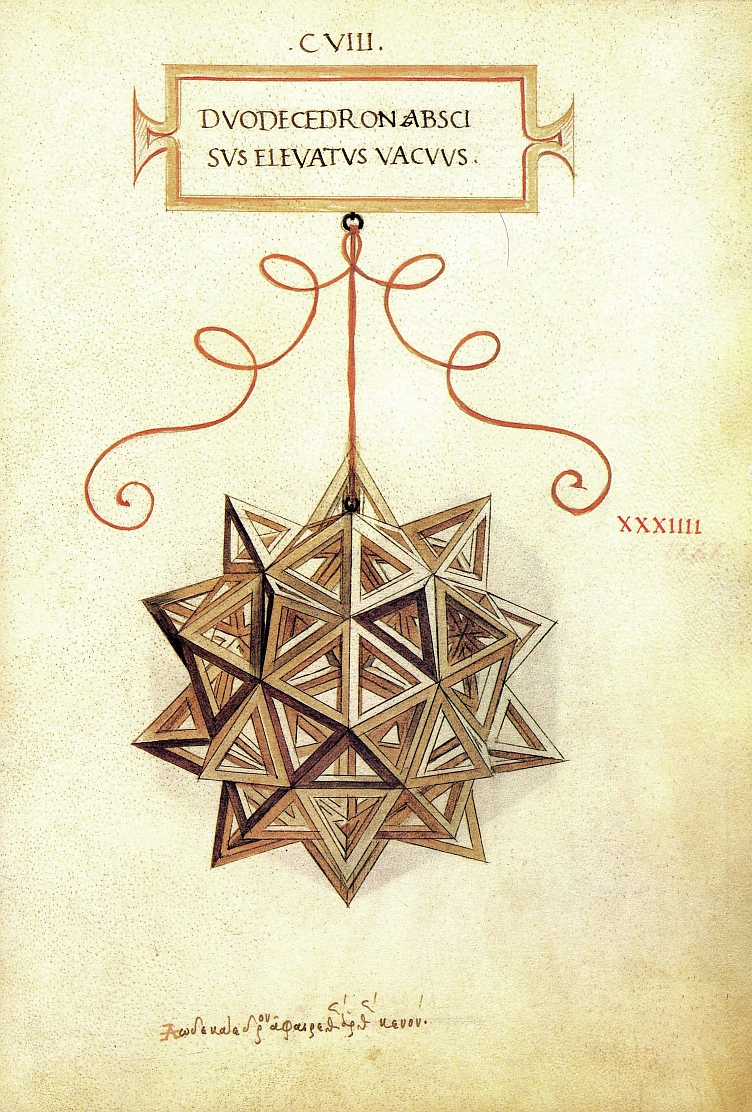
Above is the illustration from the manuscript version of the book, on which my reconstruction is based. The drawings are beautifully hand colored like this in the Ambrosiana manuscript, reprinted by Officina Bodoni, 1956, and also by Silvana Editoriale, 1982. There are roughly sixty similar illustrations in the book.
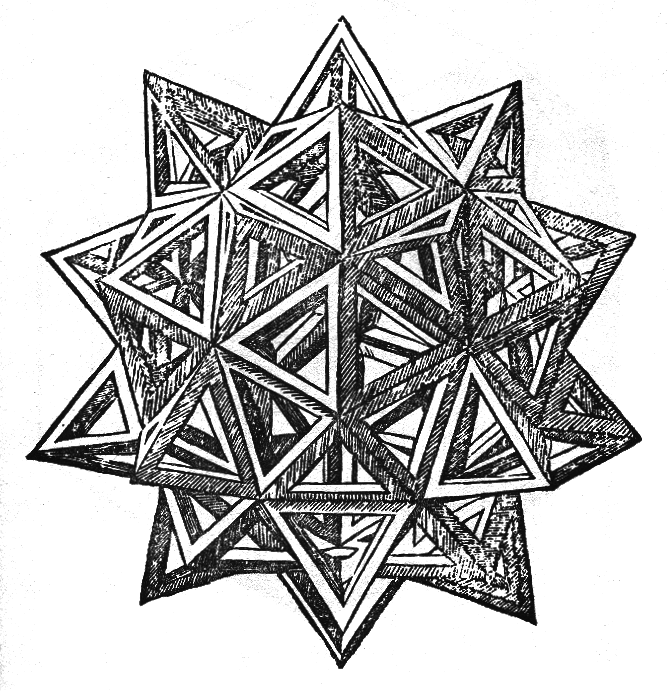
When the book was printed, woodcuts were produced for each of the images. Here is the woodcut based on the drawing, which appeared in the printed version of the book. Mathematically, the shape derives from an icosidodecahedron by erecting a pyramid of equilateral triangles on each face.

Above is the illustration from the manuscript version of the book, on which my reconstruction is based. The drawings are beautifully hand colored like this in the Ambrosiana manuscript, reprinted by Officina Bodoni, 1956, and also by Silvana Editoriale, 1982. There are roughly sixty similar illustrations in the book.

When the book was printed, woodcuts were produced for each of the images. Here is the woodcut based on the drawing, which appeared in the printed version of the book. Mathematically, the shape derives from an icosidodecahedron by erecting a pyramid of equilateral triangles on each face.
